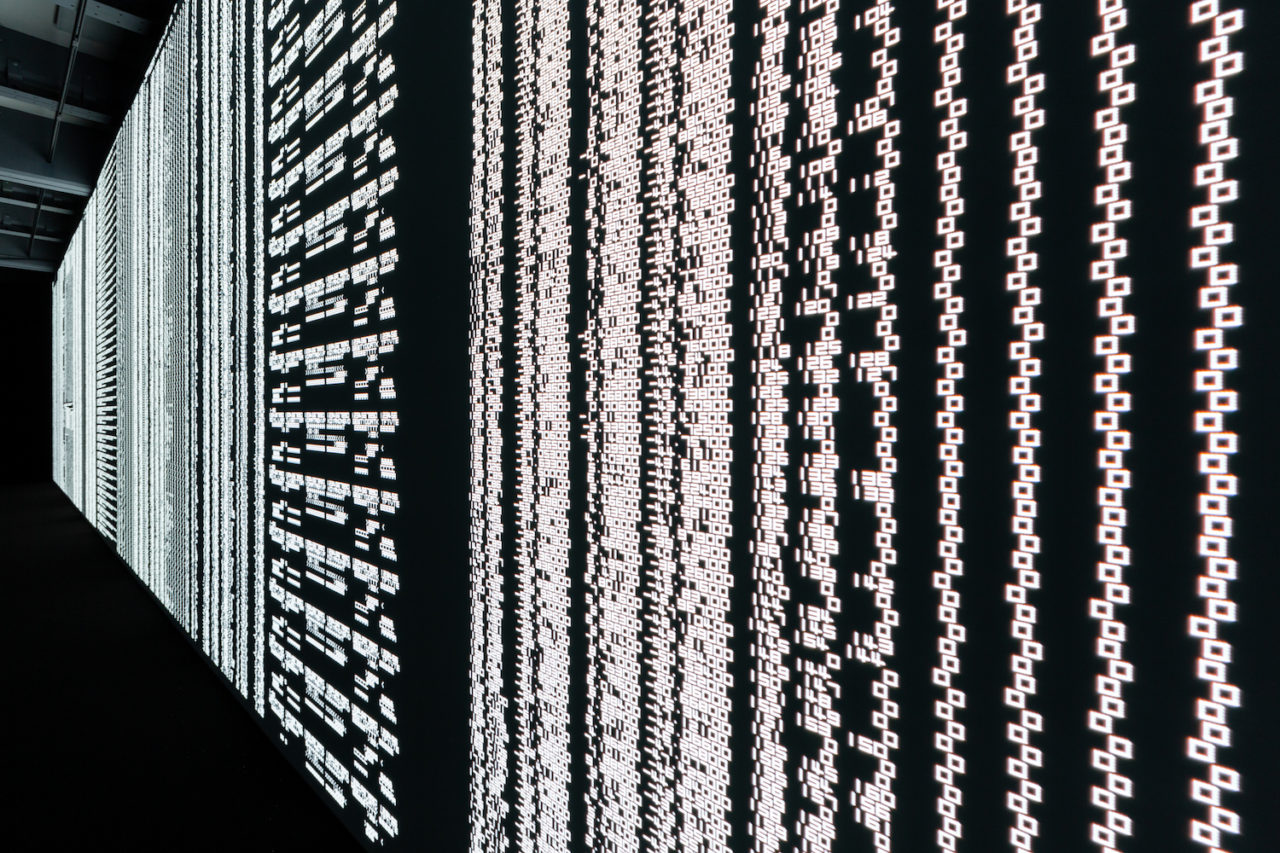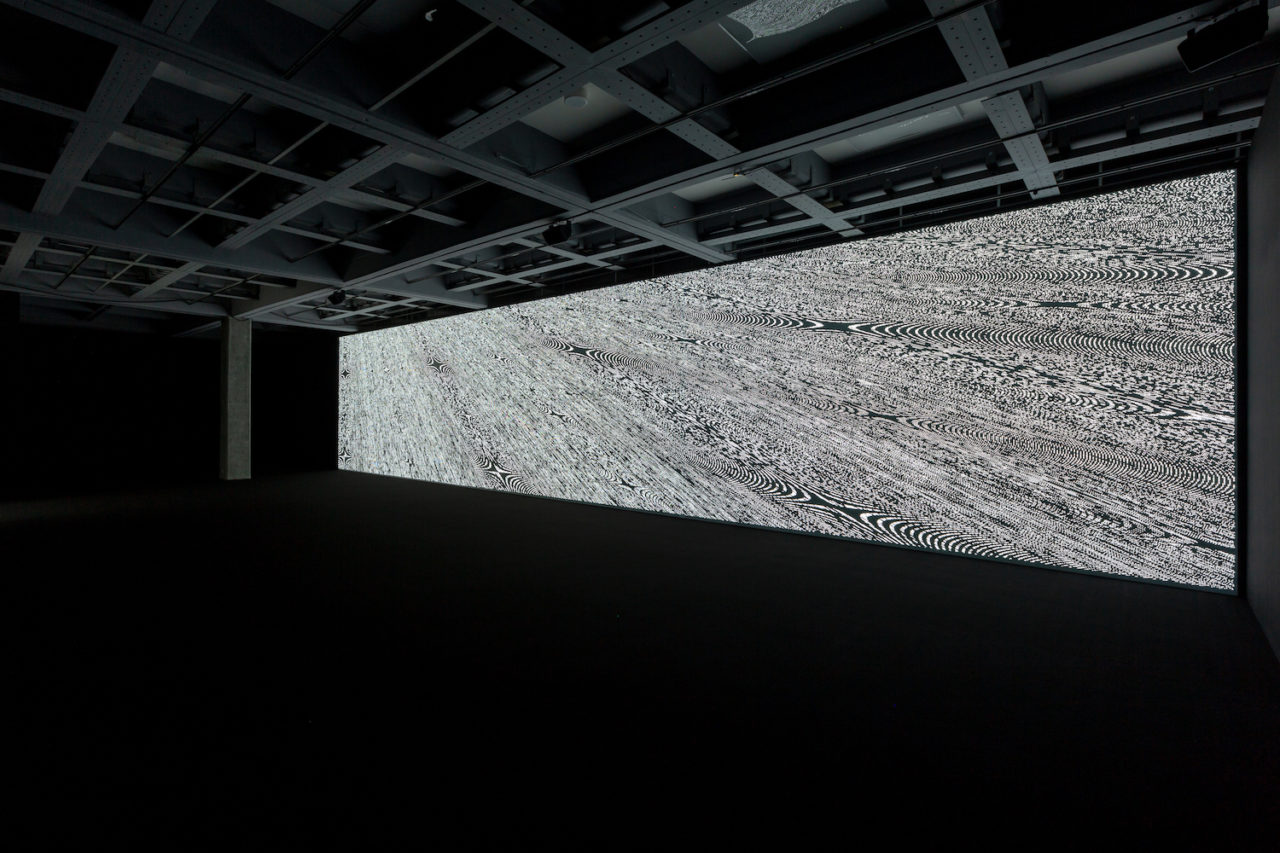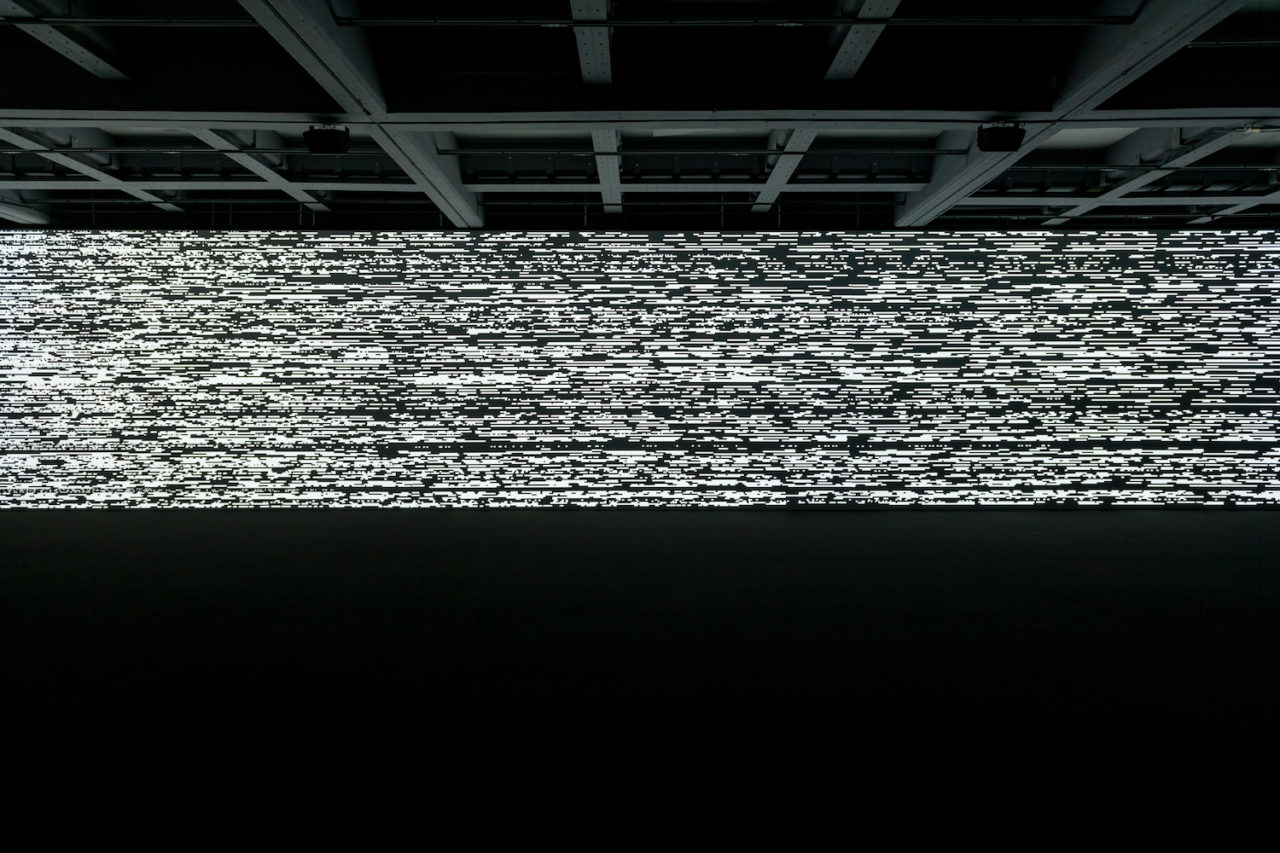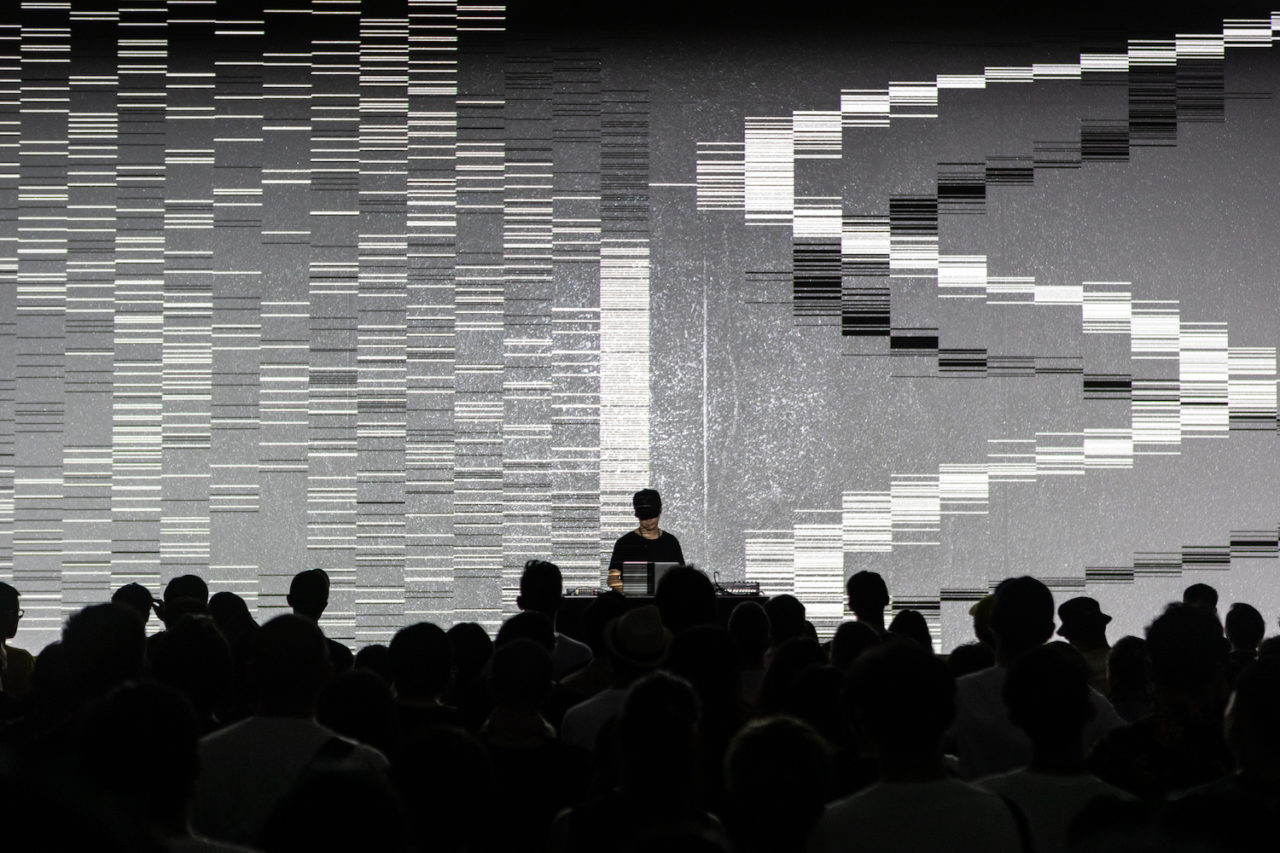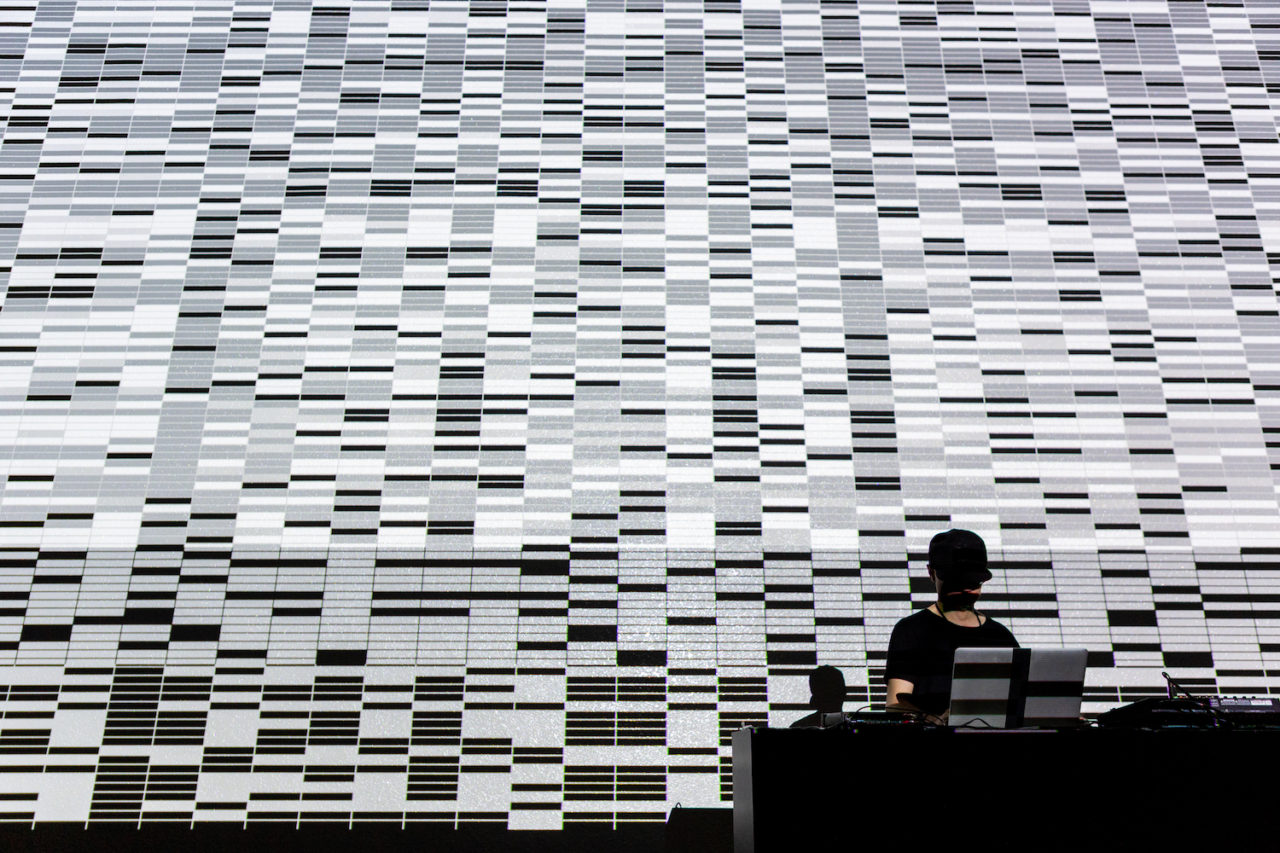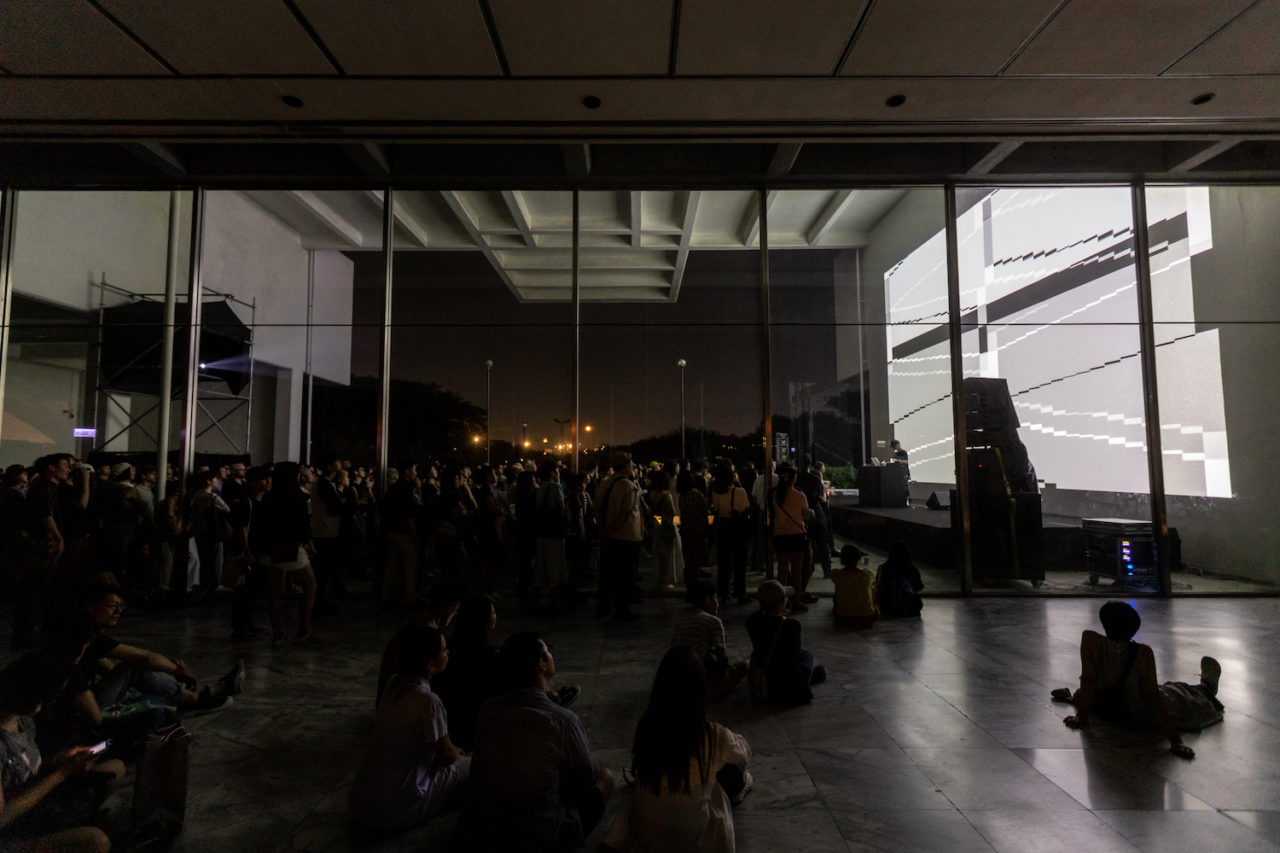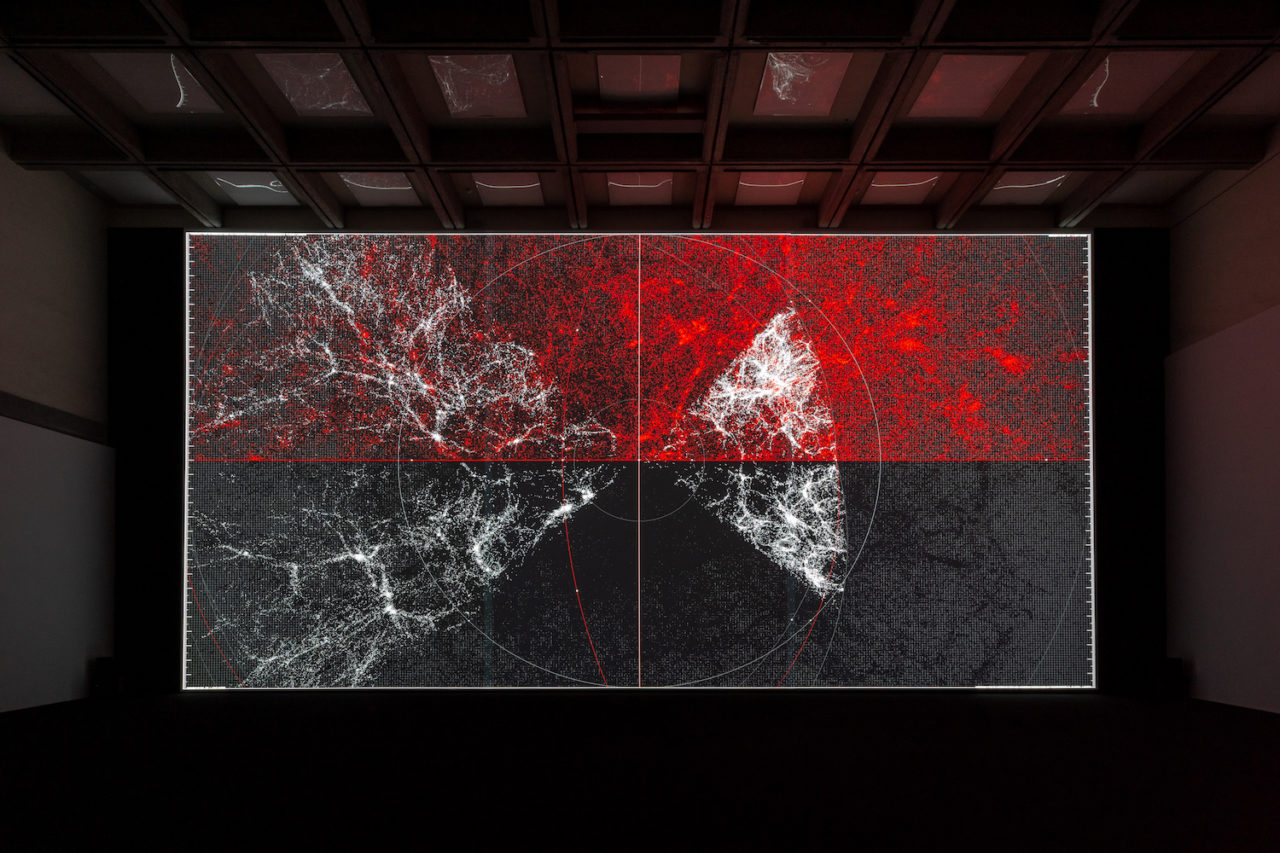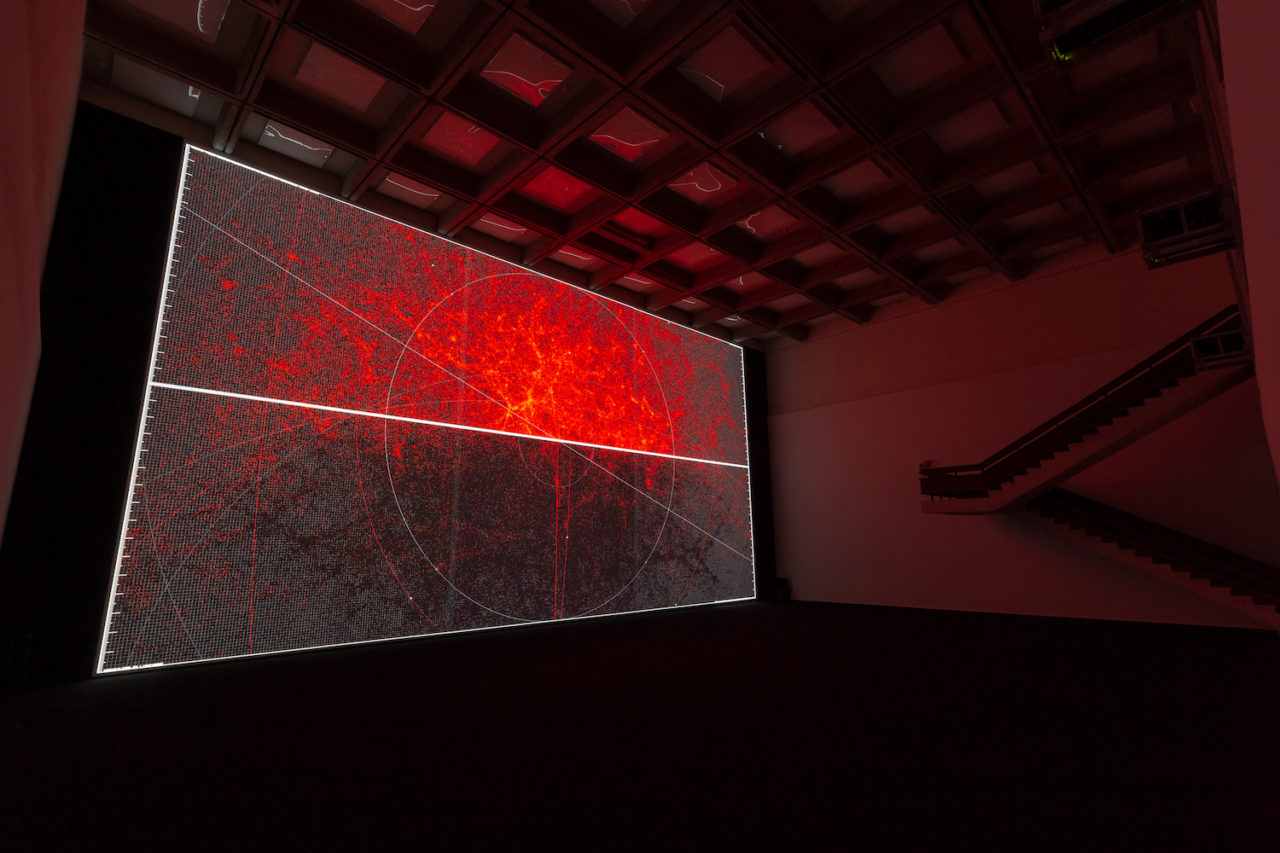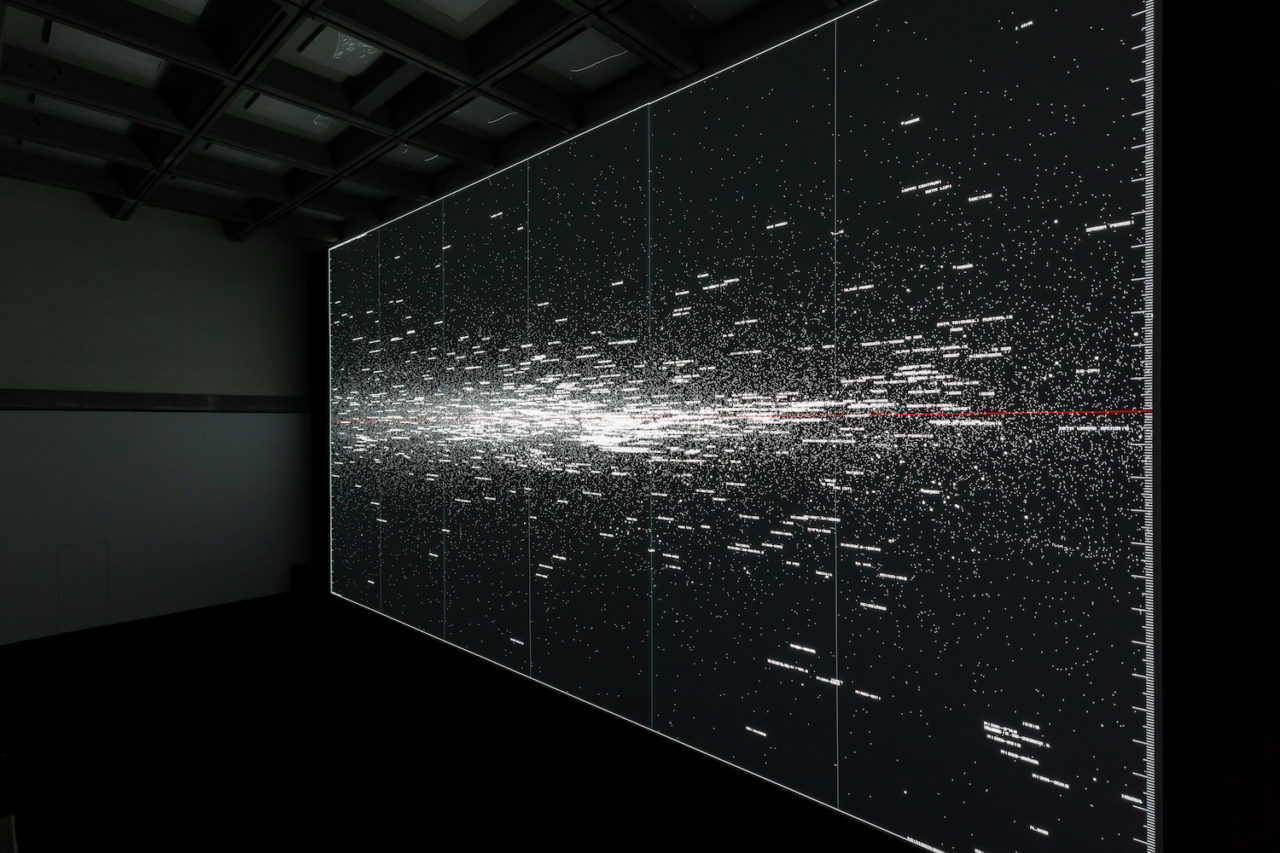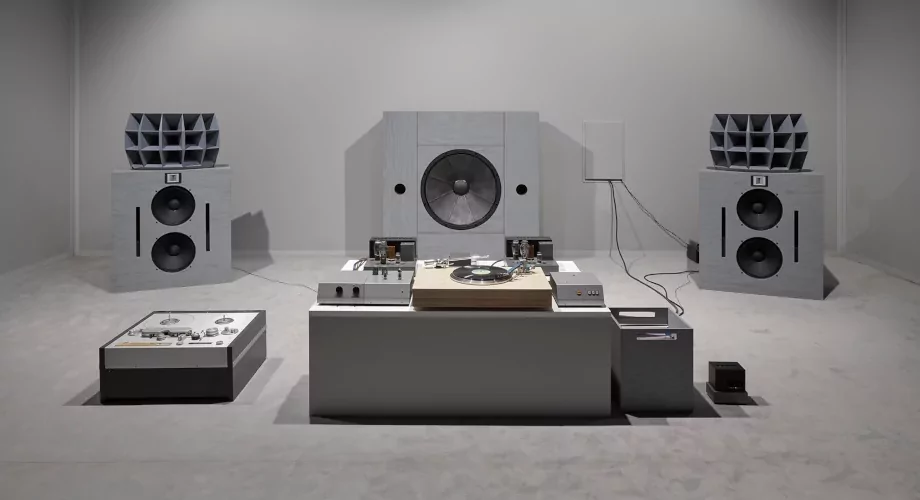Published on
August 16, 2019
Category
Exhibitions
The largest solo exhibition of Japanese artist Ryoji Ikeda in Asia for over a decade, A Cosmic Journey from Infinitesimal to Astronomical features a new The Store X The Vinyl Factory commission built from five vast Meyer SB-1 speakers. Joanna Kawecki spent the day inside his sonic universe.
Known for his data-driven, audio-visual installations that explore the physical phenomena of sound, light, space and time, above all Ikeda sees himself above all as a musician and composer. “Sometimes I compose sound into music, and sometimes I compose dots and data into visual installations,” he says. “In my works, the composition is the most important element.”
Curated by Taipei Fine Arts Museum’s Jo Hsiao, and Guest Digital Media Curator Eva Lin, the multi-layered exhibition – which features some of his renowned audio-visual installations, alongside never-before-seen artist manuscripts, sculptures and 2D works – interrogates the nature of vibration, frequency and white noise to challenge the limits of human aural perception. As Hsiao explains, “it’s about exploring the essence of the sound, and the purest sounds. The work is a gesture but also a statement.”
Eva Lin elaborates: “Ryoji Ikeda’s work allows you to see concepts you wouldn’t usually see, such as time.” Lin had invited Ikeda to exhibit at a group show in Taiwan in 2017, before approaching the Taipei museum to present a larger retrospective of his work. Despite Ikeda’s concern with mathematical concepts, Lin says, “even [visitors] without understanding of digital media… can enjoy it like a musical concert.”
Commissioned by The Store X The Vinyl Factory, a [continuum] is comprised of five large, super-directional Meyer SB-1 speakers positioned in the museum lobby. Each speaker emits a different frequency and “concert pitch”, relating to the standard orchestral tuning pitch of “A”, which has never been precisely defined.
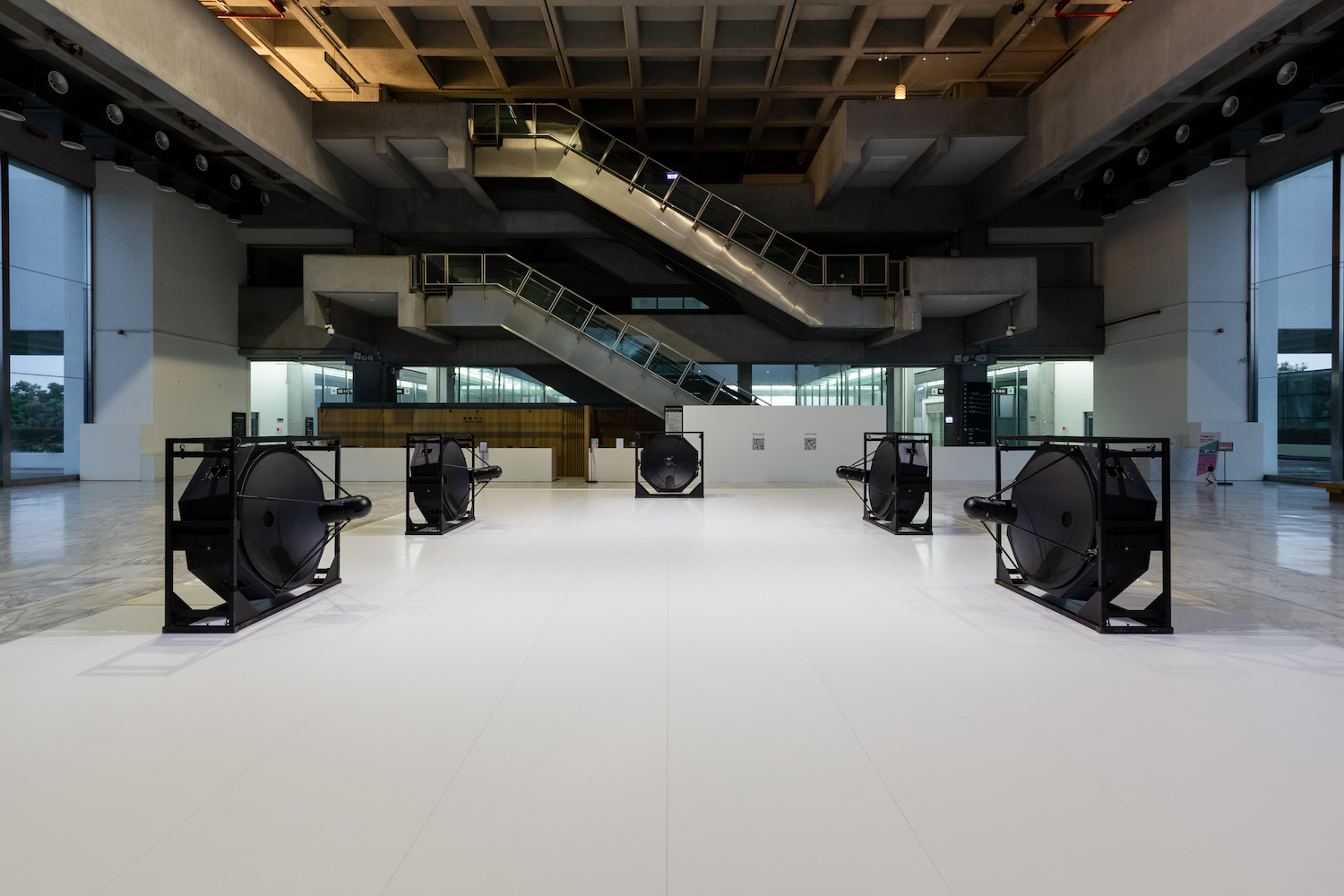
Ryoji Ikeda | A [continuum] (2018) © Ryoji Ikeda & Taipei Fine Arts Museum
As you remove your shoes to stand between the giant speakers and allow the sound to swell through you, the sonic forms begin to create their own abstract harmony – an experience which transcends the piece’s conceptual framework. “I don’t like the word ‘understand’ for art,” he explains. “Art is to feel, to experience. For example, when you go to a concert, do you ask Mozart about the meaning of the melody? You go to enjoy it, and can pursue your own meaning afterward. This is exactly the same.”
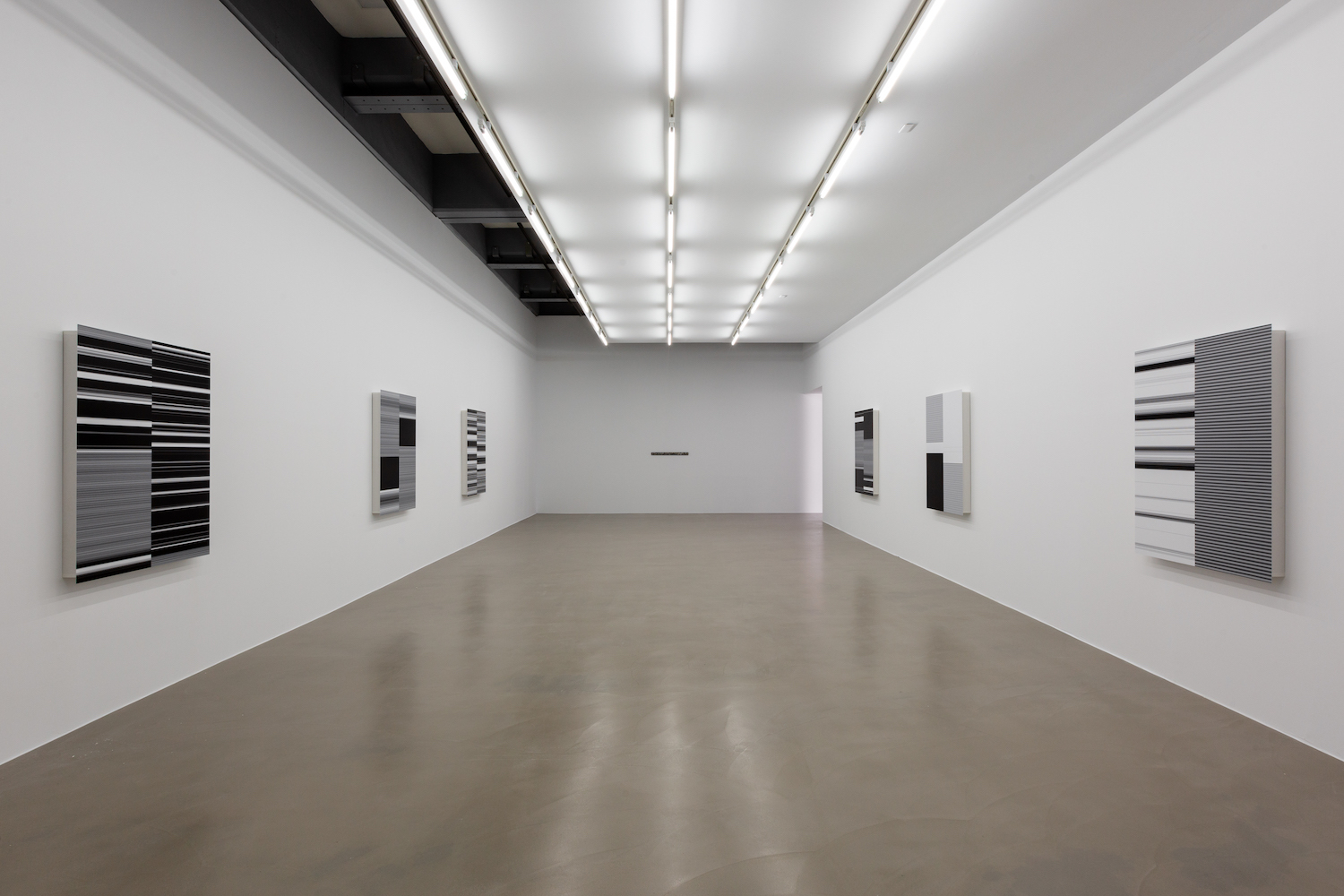
The exhibition begins with a series of previously unseen framed notes, sketches and artist manuscripts, providing an insight into Ikeda’s conceptual formations and mathematical explorations.
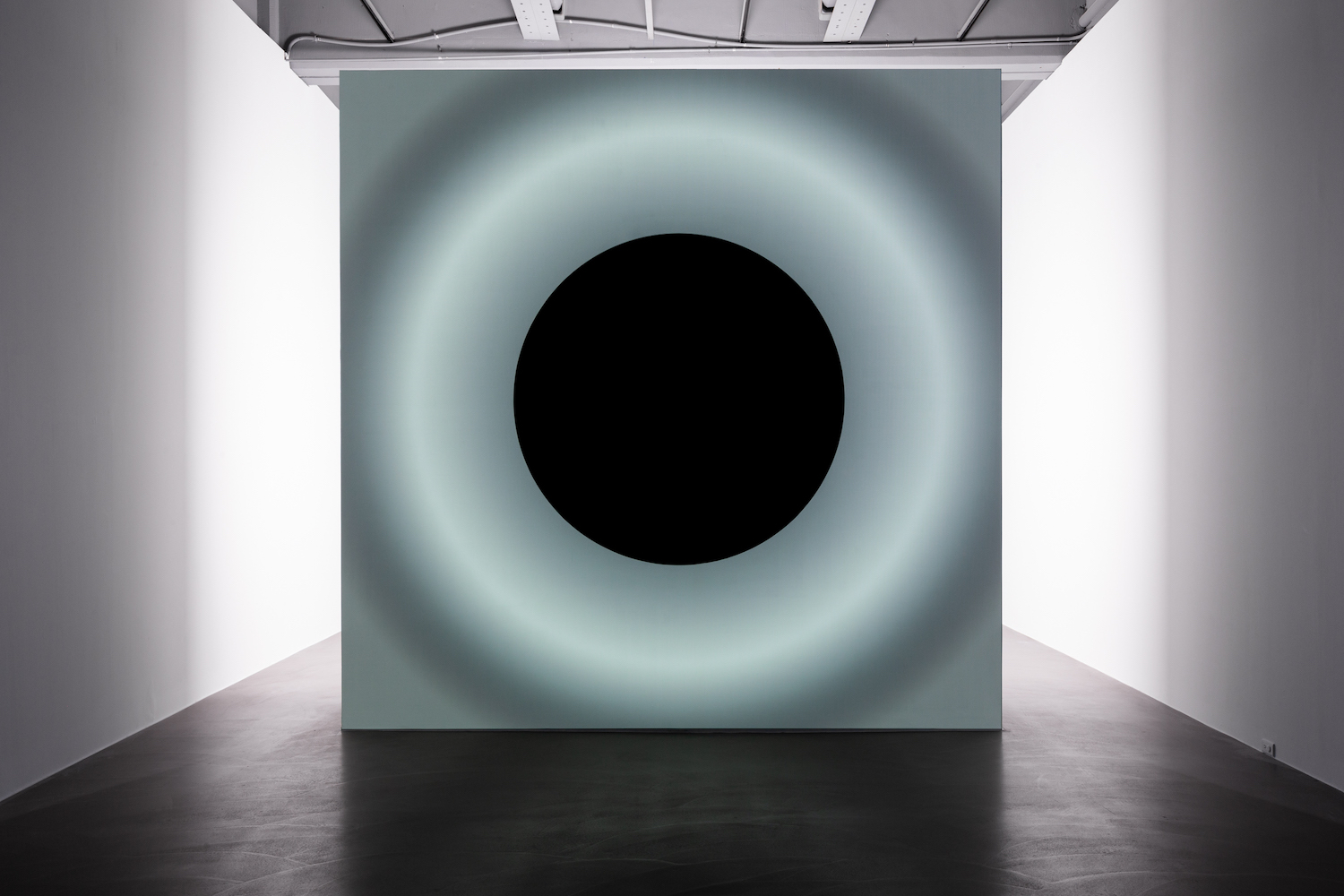
Ryoji Ikeda | Point of No Return (2018) © Ryoji Ikeda & Taipei Fine Arts Museum
In the following space, we find a pulsating black circle with white noise filling the room, titled Point of No Return. Ikeda first created the work in 2018, to coincide with the anniversary of the discovery of the black hole. Backed by a blindingly bright, white light, which is emitted at exact intervals, together they create a yin and yang effect.
The second room presents monochromic, data-driven visualisations derived from NASA materials, mineral data and DNA sequences. As a loud buzz emanates from the approaching room, a 30m-wide screen projects Code-Verse, a 2018 audio-visual installation soundtracked by an amalgamation of white noise and digital noise. As pixels rotate, morph and recalculate on the screen in various patterns, the work evokes a feeling of both zen-like harmony and apprehension – of calm and anxiety. The detailed, data-driven algorithms are mesmerising.
Ryoji Ikeda | Code-verse © Ryoji Ikeda & Taipei Fine Arts Museum
Through his work, Ikeda highlights fundamental elements of the universe, composed of pixels and data signals, waves and energy transmissions. “Eventually I made a certain composition that could be navigated and give visitors a great journey through the ‘fundamentals of the universe’”, Ikeda explains.
Ikeda’s work also encompasses 2D imagery, sculpture, and live shows. On the opening evening, Ikeda performed twice in the outdoor courtyard, projecting hypnotic visuals in sync with his own experimental sounds. With rhythmic elements of techno emerging from the white noise and electronic patterns, Ikeda’s sets take on aspects of a performative art piece with vibrations so deep they will penetrate your whole body.
Further into the exhibition we find his light box works in a dark room, both abstract and familiar with repetitive strokes and fragments. Morse code and braille are presented in a scale-like format, almost as if they are the ascending and descending scales of a music composition.
Ryoji Ikeda | The Planck Universe [macro] © Ryoji Ikeda & Taipei Fine Arts Museum
In the final room, an imposing large-scale audio-visual installation titled The Planck Universe [Macro] explores the boundlessness of the universe as derived from fragments of data. The work was conceived during Ikeda’s residency at CERN (European Organisation for Nuclear Research) in Geneva in 2015. Although mostly monochromatic, here we find blood-red pixels embedded into the sequences that circle back to the concept of the Planck length (a unit in particle physics that is defined by physical constants). While the work provides a sense of existential enlightenment, where the viewer finds themselves as a fragment in the cosmos, there are a myriad of contemporary themes to be extracted, from information overload to data corruption and misuse.
Not that Ikeda is interested in these extrapolations. Instead he busies himself with abstract motions, and takes a practical approach to his artistic output, negating the possibility of philosophical conclusions. As he explains: “It’s very important for art not to have a message, because I don’t want to take that freedom from viewers. Everyone, from children to adults, have their own experience.”
Ryoji Ikeda’s A Cosmic Journey from Infinitesimal to Astronomical, is open until 17th November, 2019. Head here to find out more.
This is an edited version of an article first published on Champ magazine.
Photos courtesy of TFAM

